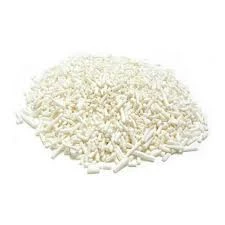
Understanding E102 Food Additive and Its Effects on Health and Safety
Understanding E102 The Controversial Food Additive
E102, commonly known as tartrazine, is a synthetic yellow dye used extensively in the food industry. This food additive is recognized for its ability to enhance the appearance of foods, making them more visually appealing to consumers. However, along with its benefits, E102 has also sparked a fair amount of controversy and concern regarding its safety and potential health effects.
The Role of E102 in Food Production
Tartrazine is primarily employed to impart a vibrant yellow hue to various food products, including candies, beverages, baked goods, and processed foods. Being a part of the azo dye family, E102 is favored for its stability, brightness, and low cost. Its use in food products allows manufacturers to create a consistent visual experience, enticing customers and potentially boosting sales.
Regulatory Status and Safety Concerns
E102 is regulated by various health authorities around the world. In the European Union, for example, it is classified as an approved food additive, and its use is allowed within specific limits. The European Food Safety Authority (EFSA) has conducted numerous evaluations of tartrazine, establishing acceptable daily intake levels. However, the additive has been associated with allergic reactions in certain individuals, particularly those who suffer from asthma or sulfite sensitivity.
In some cases, the consumption of E102 has been linked to hyperactivity and behavioral issues in children. A study published in a reputable medical journal indicated that artificial colorings, including E102, may exacerbate ADHD symptoms in susceptible children. As a result, some countries have mandated warning labels on foods containing this dye, advising consumers of its potential effects.
e102 food additive

Natural Alternatives to E102
Due to growing health concerns and consumer awareness regarding artificial additives, there has been a noticeable shift towards natural alternatives. Ingredients such as turmeric, saffron, and beet juice are increasingly used as coloring agents. These natural alternatives not only provide vibrant colors but are also perceived as healthier options, aligning with the rising trend of clean eating.
Consumers are becoming more discerning about the contents of their food. Many are opting for products free from artificial colors and preservatives, prompting food manufacturers to reformulate their recipes. This movement has led to a significant decline in the use of synthetic dyes like E102 in many markets.
Conclusion
E102, or tartrazine, serves a critical function within the food industry by providing vibrant color to a range of products. While it has been deemed safe by regulatory authorities when consumed within established limits, ongoing concerns regarding allergic reactions and hyperactivity in children have raised questions about its continued use. As awareness of health and wellness grows, the demand for natural food additives is likely to increase, posing challenges for manufacturers who rely on synthetic dyes.
Ultimately, consumers should be empowered to make informed decisions about the food they consume. Understanding the implications of food additives like E102 will assist them in navigating their options within a complex market. Education and transparency in labeling can aid individuals in choosing products that align with their dietary preferences and health needs, paving the way for a healthier future in the food industry.
-
Pure Sodium Dichloroisocyanurate Dihydrate | Powerful DisinfectantNewsAug.29,2025
-
Industrial Chemicals: Quality & Purity for Every IndustryNewsAug.28,2025
-
Nitrile Rubber Honoring Strict Production StandardsNewsAug.22,2025
-
Aspartame Ingredients Honoring Food Safety ValuesNewsAug.22,2025
-
Fertilizer for Balanced Plant NutritionNewsAug.22,2025
-
Cyanide Gold Processing with High Purity AdditivesNewsAug.22,2025
-
Formic Acid in Textile Dyeing ApplicationsNewsAug.22,2025
Hebei Tenger Chemical Technology Co., Ltd. focuses on the chemical industry and is committed to the export service of chemical raw materials.
-

view more DiethanolisopropanolamineIn the ever-growing field of chemical solutions, diethanolisopropanolamine (DEIPA) stands out as a versatile and important compound. Due to its unique chemical structure and properties, DEIPA is of interest to various industries including construction, personal care, and agriculture. -

view more TriisopropanolamineTriisopropanolamine (TIPA) alkanol amine substance, is a kind of alcohol amine compound with amino and alcohol hydroxyl, and because of its molecules contains both amino and hydroxyl. -

view more Tetramethyl Thiuram DisulfideTetramethyl thiuram disulfide, also known as TMTD, is a white to light-yellow powder with a distinct sulfur-like odor. It is soluble in organic solvents such as benzene, acetone, and ethyl acetate, making it highly versatile for use in different formulations. TMTD is known for its excellent vulcanization acceleration properties, which makes it a key ingredient in the production of rubber products. Additionally, it acts as an effective fungicide and bactericide, making it valuable in agricultural applications. Its high purity and stability ensure consistent performance, making it a preferred choice for manufacturers across various industries.





